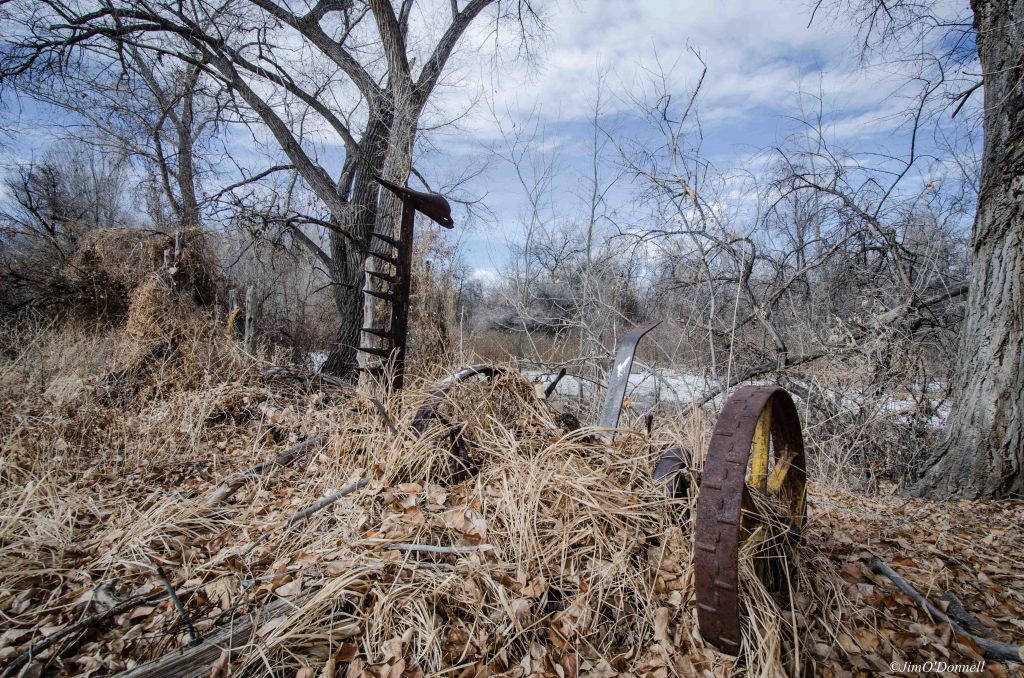Beavers Will Be a Key Part of Our Rio Fernando Restoration Project
On Wednesday, restoration ecologist Steve Vrooman and watershed restoration guru Bill Zeedyk were out on the Rio Fernando property doing an initial walk though to begin planning the restoration work for the summer.
We came to a few interesting conclusions. For one, beavers have moved into the property! This is wonderful news! They have been taking down trees recently and are slowly building up a dam. The downside is that there isn’t much for them to eat. Beavers prefer willow, cottonwood and cattails while big sections of our Rio Fernando are overgrown with non-native Russian olives and Siberian elms. An adult beaver needs to eat around 3lbs of bark/day to survive. Not prosper, just survive. If we want them move in permanently and to do the majority of the restoration work in our section of the creek we will need to change the ecology of the area.
Check out these photos to learn more.

The beavers have been hard at work recently! Very good news! We want the beavers to help us restore our section of the Rio Fernando! Beavers slow the flow of water in the stream when the build dams. As a result, a pond or area of wetland is formed. Some biologists estimate that upwards of 85 percent of all native North American wildlife depend on wetlands for food, water and habitat. That makes wetlands extremely important to the ecosystem. Wetlands also slow the runoff of rains and snowmelt storing water that would otherwise be lost or cause flooding downstream.


Bill Zeedyk is THE guru of watershed restoration in the American Southwest. A soft-spoken retired Forest Service manager, Zeedyk guides the multiple restoration projects around the state to ensure they have a scientific basis and a solid plan to work from. “You need to have people who are committed to the land,” he told me once. “With a lot of these projects you can’t see an immediate result, but it grows over time,” he says. “The cumulative effect of years of work is ecologically significant.”

Some sections of the Rio Fernando have been straightened. This was probably done for farming at some point. We want to get the river back to its natural, winding, curvey state. A natural and healthy river meanders. It curves. It winds its way through the landscape. Why? Watch this short video. For a more poetic take a curving rivers, check this out.

Anyway, once the beavers get settled in and the dams grow, we hope to see the upland areas watered and turned back into the wetlands they used to be. Beaver dams slow the water and creates a pond or wetland. Besides the beneficial impacts for wildlife, water retention and flood control, these ponds and wetlands also slow the movement of sediments in the stream causing it to deposit and build up in the pond. This cleans the water as it moves downstream creating better habitat for fish and the invertabrates they eat. This is good stuff! This nutrient-rich sediment both provides food for any little animals living at the bottom of the pond and seeps into the surrounding soil. Years down the road, when beavers move on their old dams will breaks down, the water drains out and all that sediment that depsited will leave behind an extremely lush meadow full of rich soil.


Beavers are keystone species in ecosystems. That is, they have an outsized impact on the land. A keystone species is an animal on which other species in an ecosystem largely depend. If it were removed the ecosystem would change drastically. The historic removal of beavers from the American Southwest changed our landscape in massive ways. Arguably, the removal of the beaver is the cause of many of our water and wildlife challenges today. Beavers are protected these days, listed as one of New Mexico’s “species of greatest conservation need” thanks to its role in creating healthy stream and river environments.
The ecosystem engineering that beavers carry out has a positive influence on both wildlife and plant life and greatly increases biodiversity. A wide range of research shows us that more birds, reptiles and plant live in areas modified by beavers. Beavers bring complexity to ecosystems, making them more resilient and powerful.

Says Zeedyk: “Nature has far better solutions. It is more effective and cheaper than any mechanized restoration tool we can think up.”
We are meeting again on February 12, 2018 to get more specific on our wetland restoration project. After that, our Public Programs and Outreach Coordinator, Maya Anthony, will have an update on how specifically we plan to work with our beaver amigos to restore our section of the Rio Fernando section to a healthy and fully functional wetland jewel!




